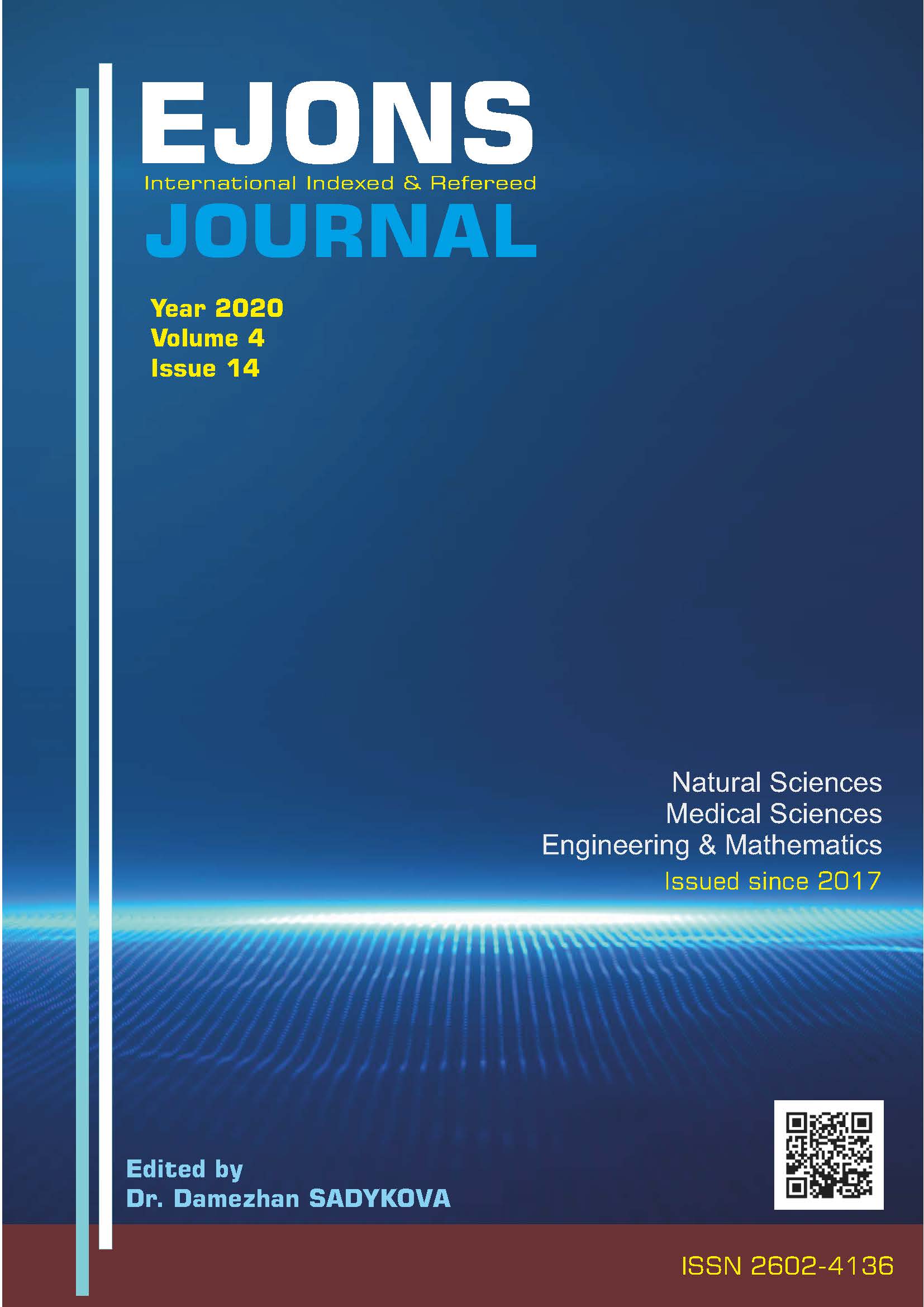WASTE HEAT RECOVERY SYSTEMS: A SAMPLE APPLICATION IN A SPARK IGNITION ENGINE
DOI:
https://doi.org/10.38063/ejons.205Keywords:
Internal combustion engine, Exhaust waste heat conversion, Thermoelectric generatorAbstract
ATIK ISI GERİ DÖNÜŞÜM SİSTEMLERİ: BUJİ ATEŞLEMELİ MOTORDA ÖRNEK BİR UYGULAMA (WASTE HEAT RECOVERY SYSTEMS: A SAMPLE APPLICATION IN A SPARK IGNITION ENGINE ) Author : Ahmet Baturalp ÖKMEN Habib GÜRBÜZ Type : Printing Year : 2020 Number : 14 Page : 158-177 Cite : Ahmet Baturalp ÖKMEN Habib GÜRBÜZ, (2020). ATIK ISI GERİ DÖNÜŞÜM SİSTEMLERİ: BUJİ ATEŞLEMELİ MOTORDA ÖRNEK BİR UYGULAMA. EJONS INTERNATIONAL JOURNAL ON MATHEMATICS, ENGINEERING - NATURAL SCIENCES, 14, p. 158-177. Doi: 10.38063/ejons.205.
 Bu eserin tam metnini indirmek için tıklayın
Summary
Bu eserin tam metnini indirmek için tıklayın
Summary
Bu çalışmada, enerji üretiminin gerçekleştiği sistemlerde kayıp enerji olarak atmosfere atılan ısı enerjisinin yeniden kullanılabilir hale getirildiği atık ısı geri dönüşüm sistemleri incelenmiştir. Çalışmada ayrıca, içten yanmalı motorlarda egzoz gazları ile atmosfere atılan atık ısı enerjisinin elektrik enerjisine dönüştürüldüğü termoelektrik jeneratör sistemin örnek bir uygulaması gerçekleştirilmiştir. Bu kapsamda, 190x160x50 mm boyutlarında dikdörtgen geometrik yapıya sahip şekilde tasarlanarak 3 mm alüminyum levha malzemeden üretilmiş egzoz eşanjörü tek silindirli buji ateşlemeli bir motorun egzoz yoluna bağlanarak 1800 d/d, 2200 d/d ve 2600 d/d sabit motor devrinde deneysel çalışmalar gerçekleştirilmiştir. Tasarlanan egzoz eşanjörünün akış alanı 2 eşit parçaya bölünerek eşanjörün her iki yüzeyinden elektrik üretiminin gerçekleştirilebileceği yapı oluşturulmuştur. Deneysel çalışmalarda, egzoz eşanjörü üzerinden egzoz gazlarının giriş-çıkış sıcaklıkları ile birlikle eşanjör yüzeyinden seçilen 6 farklı noktadan K tipi termokupl kullanılarak sıcaklık ölçümü gerçekleştirilmiştir. Deneysel çalışmalarda elde edilen eşanjör egzoz gazı giriş sıcaklığı ve debisi kullanılarak aynı eşanjör geometrisinin hesaplamalı akışkanlar dinamiği (HAD) yöntemi ile zamandan bağımsız ve sabit basınç altında sayısal akış analizleri gerçekleştirilmiştir. HAD analizlerinde eşanjör giriş-çıkış sıcaklıkları ile birlikte eşanjör içerisindeki basınç, sıcaklık ve hız dağılımları analiz edilerek kontur dağılımları oluşturulmuştur. Deneysel ve sayısal analizi sonuçları karşılaştırılarak HAD programında gerçekleştirilen sonuçların doğruluğu tespit edilmiştir. Çalışma kapsamında elde edilen bulgulardan, atık ısı dönüşüm sistemleri kullanılarak enerji üretim sistemlerinde toplam sistem veriminin artırılabileceği görülmüştür. Ayrıca, tasarlanarak deneysel çalışmaları gerçekleştirilen egzoz eşanjörü giriş-çıkış sıcaklıkları ile birlikte eşanjör içerisindeki sıcaklık dağılımının HAD programı yardımıyla %10’a yakın bir hata ile tespit edilebileceği, hata oranının düşük motor devirlerinde yüksek motor devrilerine oranla daha düşük olduğu tespit edilmiştir.
Keywords İçten yanmalı motor, Egzoz atık ısı dönüşümü, Termoelektrik jeneratör, AbstractIn this study, waste heat recovery systems were examined in terms of reuse which is heat energy discarded to atmosphere as a lost energy at the energy production systems. In the study also in which the waste heat energy discarded into the atmosphere with exhaust gases in internal combustion engines is converted into electrical energy had been performed an exemplary application of the thermoelectric generator system. In this scope, the exhaust exchanger, which has design rectangular geometric structure of 190x160x50 mm dimensions and produced from 3 mm aluminum plate material and connected to the exhaust way of a single-cylinder spark ignition engine at a constant engine speed of 1800 rpm, 2200 rpm and 2600 rpm experimental studies had been performed. The flow area of the designed exhaust exchanger was divided 2 equal parts and into the structure where electricity can realizable produced from both surfaces of the exchanger had been created. In experimental studies, using K type thermocouple from 6 different points selected from the heat exchanger surface via the inlet-outlet temperatures of the exhaust gases over the exhaust heat exchanger temperature measurement was carried out by. Using the heat exchanger exhaust gas inlet temperature and flow rate obtained in the experimental studies, computational fluid dynamics (CFD) method of the same heat exchanger geometry was performed in a steady and pressure-based analysis. In CFD analysis, the contour distributions are created by analyzing the pressure, temperature and velocity distributions in the heat exchanger along with the heat exchanger inlet and outlet temperatures. By comparing the experimental and numerical analysis results, the correctness of the results performed in the CFD program was determined. From the results obtained within the scope of the study, it was observed that total system efficiency can be increased in energy generation systems by using waste heat recovery systems. Also, by designing experimental work carried out exhaust heat exchanger inlet-outlet temperatures combined heat exchanger in which the temperature distribution of the CFD program aid can be detected by a close error to 10%, compared to high engine speed at low engine speed error rate was found to be lower.
Downloads
Published
How to Cite
Issue
Section
License

This work is licensed under a Creative Commons Attribution-NonCommercial 4.0 International License.


